An Overview of the Metaplex Protocol for Establishing NFT Protocol Standards in the Solana Ecosystem
Written by: Seaside, PANews
The Solana ecosystem NFT platform Metaplex launched its governance token MPLX at 8 AM Beijing time on September 20.
Users can check the airdrop details on the official website. As of 11 AM on the 21st, over 417,000 MPLX tokens have been claimed. Due to regulatory considerations, the official tweet stated that users in the United States will not be able to participate in this airdrop. The official team has also hired the digital asset compliance company Trm Labs to help exclude RUG (rug pull) project teams.
The official website shows that airdrop eligibility is divided into four categories: having created an NFT project using Candy Machine, having created more than 15 NFTs using Candy Machine V1, having created more than 30 NFTs using Candy Machine V2, and having used four or more protocols under Metaplex. Different rewards will be distributed based on these conditions.
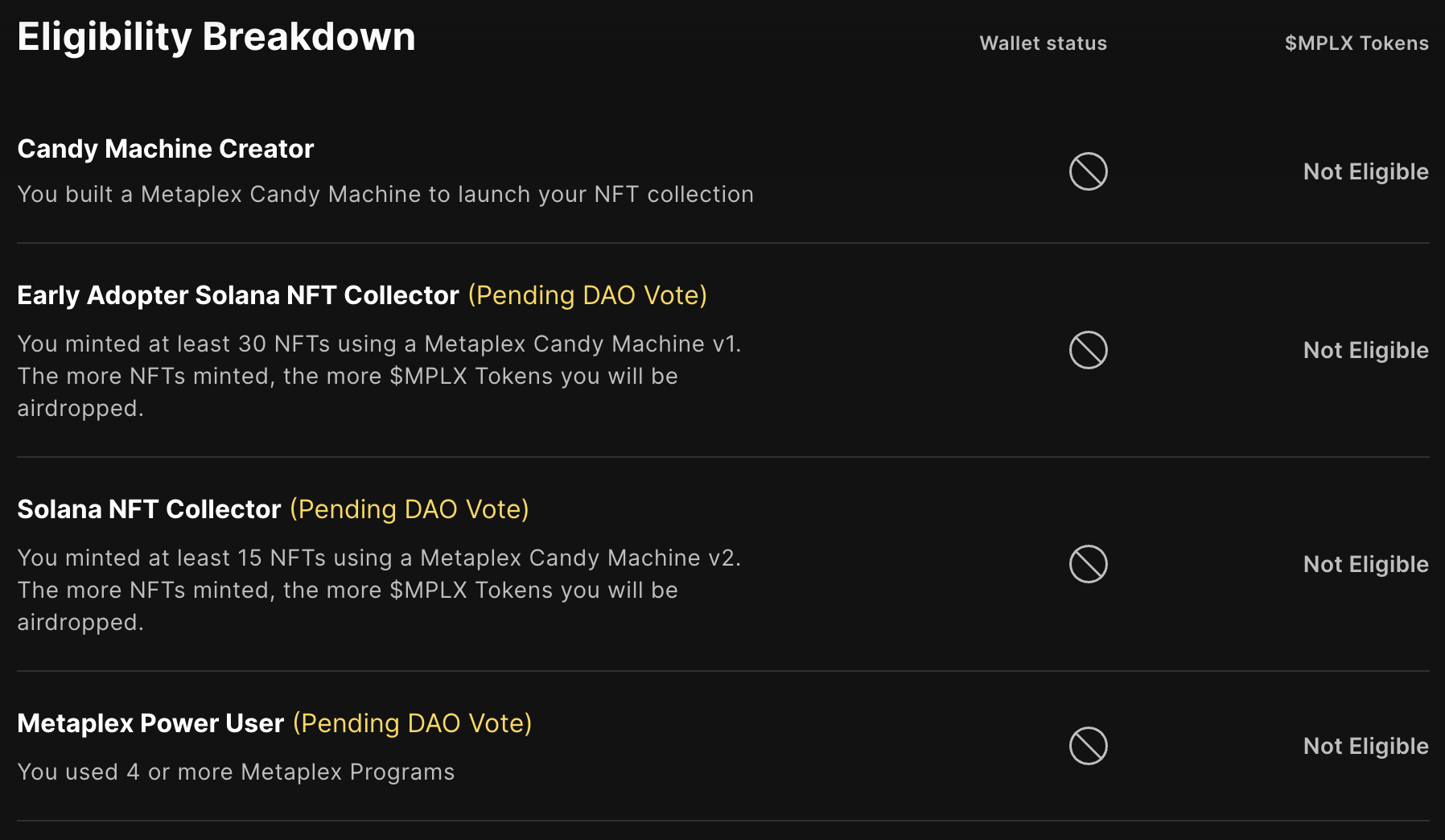
The latter three airdrop proposals are awaiting DAO voting approval, with the proposal indicating that 40 million MPLX will be allocated for the airdrop. As of now, 59% of the votes support the airdrop proposal, with 5 days remaining for voting.
S olana Ecosystem NFT Standard Establishers
Metaplex was born from an internal initiative at Solana Labs in May 2021. The booming NFT trading on the Ethereum chain motivated developers to create a standardized NFT protocol for Solana, aiming to simplify development for creators and reduce transaction costs for users. A few weeks later, a minimum viable product was launched, giving rise to the Metaplex protocol.
LinkedIn information shows that the Metaplex team consists of over 60 members, with CEO Stephen Hess holding a Bachelor of Science degree in Symbolic Systems and Human-Computer Interaction from Stanford University. He has been working in product roles since 2009. CTO Nhan Phan has been involved in software development since 2007, focusing on scalable, distributed, and usable backend infrastructure development, and is also an investor in several tech companies in the U.S. This indicates that the team has rich software development experience and product management capabilities.
Since its launch in June 2021, Metaplex has minted over 20 million NFTs and has 5.7 million unique collectors. Notable NFT projects such as Okay Bears, DeGods, and Belugies are all utilizing it. Over 2,600 development teams have forked the core repository more than 15,000 times. The official website claims that it has generated commercial value exceeding $3.4 billion and created over $1 billion in revenue for creators through Metaplex's smart contracts.
Just a day before the Metaplex airdrop, exchanges Kucoin, FTX, Huobi, and Bybit successively announced the listing of MPLX. Huobi and Kucoin opened at $0.35, with a maximum increase to $1.5. According to the official website, MPLX is the governance and utility token of the Metaplex protocol, used to facilitate participation from the market, developers, NFT creators, and other ecosystem members in the future of NFTs on Solana. Holding MPLX allows voting in the Metaplex DAO, directly participating in the future development direction of the protocol.
The rush of exchanges to list MPLX may also be attributed to its backing by numerous celebrities and well-known investment institutions. In January of this year, the Metaplex Foundation raised $46 million in its first round of funding led by Multicoin Capital and Jump Capital, with participation from Animoca Brands, Solana Ventures, and Alameda Research. More than 90 individual investors also participated, including basketball legends Michael Jordan and Allen Iverson.
Core "Three Piece Set"
According to official documentation, the Metaplex protocol mainly consists of three smart contract programs: Token Metadata, The Candy Machine, and Auction House. Token Metadata is used to define the standard for NFT metadata, The Candy Machine is responsible for NFT distribution, and Auction House is responsible for NFT auctions and sales. These smart contracts communicate with each other, providing NFT creation tools for Solana developers. Through Metaplex, users can mint NFTs, conduct auctions in the primary or secondary market, and view NFTs in a standardized manner.
1. Token Metadata
Token metadata primarily aims to add additional data to NFTs or FT tokens. This metadata contains various information about the token creator, including creator, name, transaction tax, URL, upgrade management, and more. Token metadata is also responsible for maintaining the Verified and Share attributes, with the former ensuring that the token is signed by the creator and the latter allowing the trading market to allocate royalties.
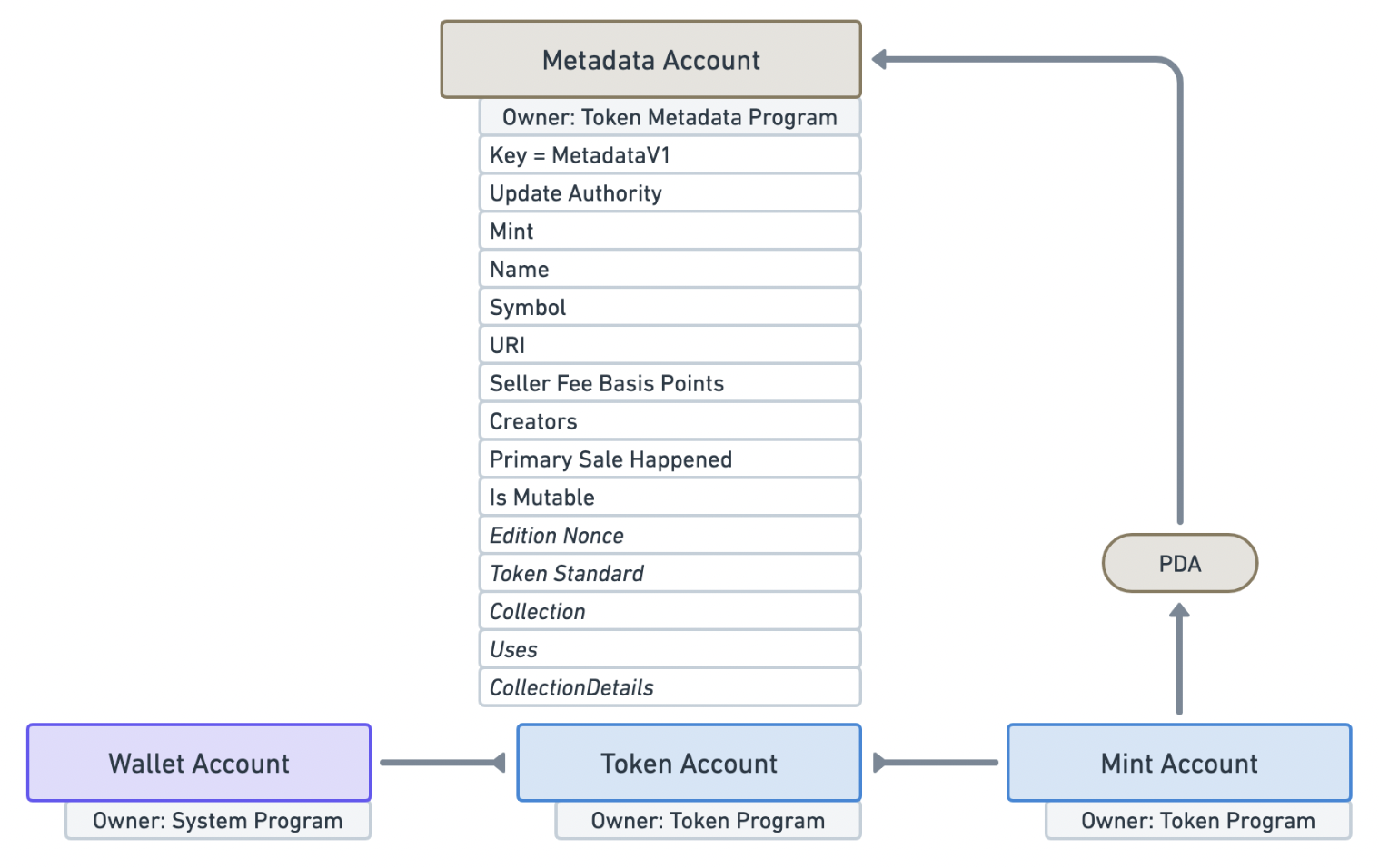
2. The Candy Machine
The official likens NFT minting and distribution to a fair, random, and unpredictable candy machine. This feature defines the time period for NFT minting; it stipulates that buyer funds can only be accepted when NFT minting is launched; and it helps create uniform NFTs through mandatory metadata types. Additionally, in the latest V2 version, the randomness of NFT minting has been enhanced to prevent targeted attacks on rare items. Whitelisting and CAPTCHA features have been added to prevent bots from bulk purchasing.
3. Auction House
Auction House refers to a non-custodial NFT auction/sale protocol that allows creators and minters to auction and sell NFTs, accepting SOL and any SPL format tokens. By using the Auction House, developers can easily deploy NFT sales programs, supporting listing generation, bidding, and sales receipt indexing, while easily retaining historical data on all listings, bids, and sales of NFTs. In addition to the existing features of the Auction House, the team has also listed future plans on GitHub.

Building Tools: Gumdrop and Storefront
Additionally, Gumdrop, developed by the Metaplex community, has garnered significant attention. This protocol allows for the creation, claiming, and closing of airdrops. Creators can choose from three types: Token transfer, Candy Machine, and Limited Edition, with distribution supporting email, SMS, wallet, Discord, and Manual methods. This protocol provides users with a simple and easy-to-use solution to meet the needs of airdrop tokens.
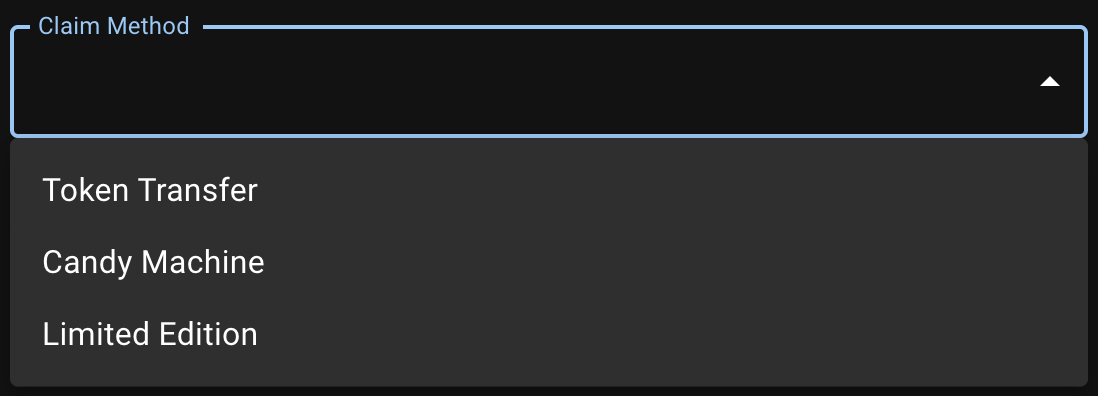
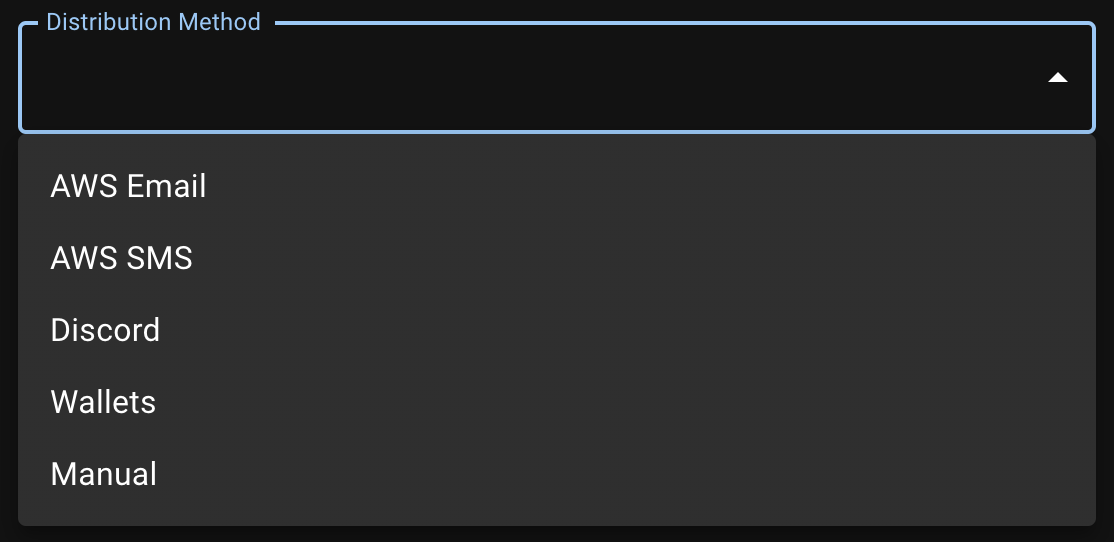
Personal Store Metaplex Storefront
This feature consists of two parts: on-chain components and locally hosted front-end. Unlike Magic Eden, it resembles a Taobao marketplace where users can create their own stores to complete the creation, sale, or auction of NFTs. However, the current version needs to run in a local environment, and users must execute simple command-line instructions to complete the startup. Specific operations can be found in the official documentation: docs.metaplex.com/deprecated/storefront/installation
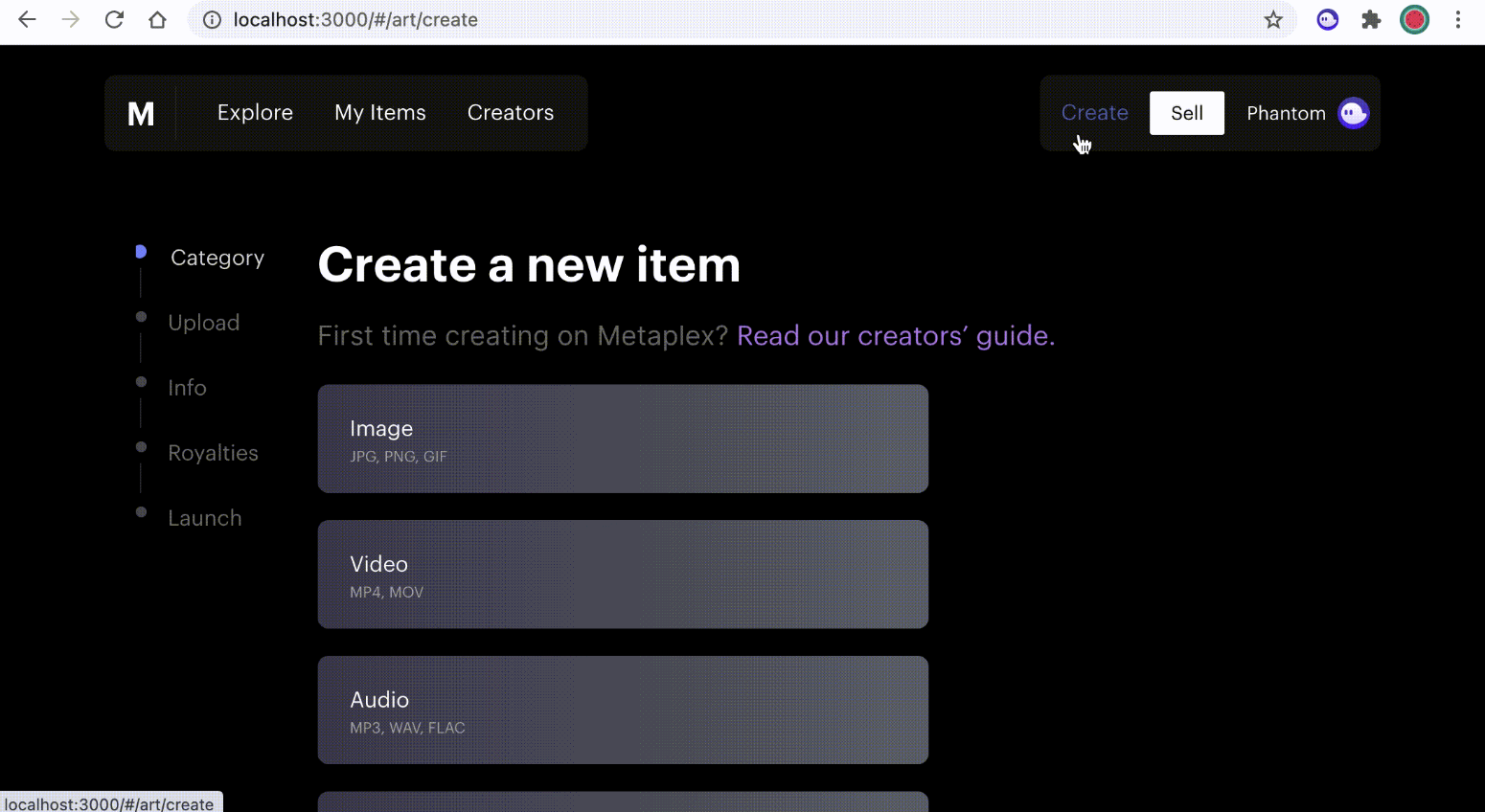
Emphasis on Creator Community
Additionally, CEO Stephen Hess places great importance on the creator community. In a recent market discussion about custom royalties, Stephen Hess stated in a post on August 25: "NFT trading platforms bypassing creator-defined royalties is exploiting creators and disconnecting from the Web3 community." He expressed that royalties are an effective way to incentivize creators and keep the community in sync. In a sluggish market environment, bypassing creator-defined royalties can put creators in a difficult position.
Under the Metaplex protocol, royalties set by creators will not be interfered with by trading platforms, providing strong protection for creators. This also reflects Stephen Hess's values regarding the creator economy. Stephen Hess has always been committed to driving products through the community and opposing centralized power. This MPLX airdrop is the first step towards achieving decentralized governance for Metaplex. Stephen Hess has called on NFT creators and developers to pay attention to the progress of MPLX in the coming weeks to witness the goals of decentralization, community governance, and high transparency.
Economic Model
The official white paper was released this morning. The total supply of MPLX tokens is 1 billion, with 21.9% allocated to creators and early supporters, of which 50% will be distributed as airdrops within one year, and the remaining 50% will be released monthly in the following year; 16% for Metaplex DAO, fully released based on DAO proposals; 20.31% for the Metaplex Foundation, fully released; 10.2% for the strategic round, with 50% distributed as airdrops within one year and the remaining 50% unlocked monthly in the following year; 10% for partners, locked for two years with linear release over one year; 9.75% for Metaplex Studios, locked for one year with linear release over two years; 5.4% for community airdrops, released immediately; 3.34% for founding advisors, locked for one year with linear release over one year; and 3.1% for founding partners, locked for one year with linear release over one year.
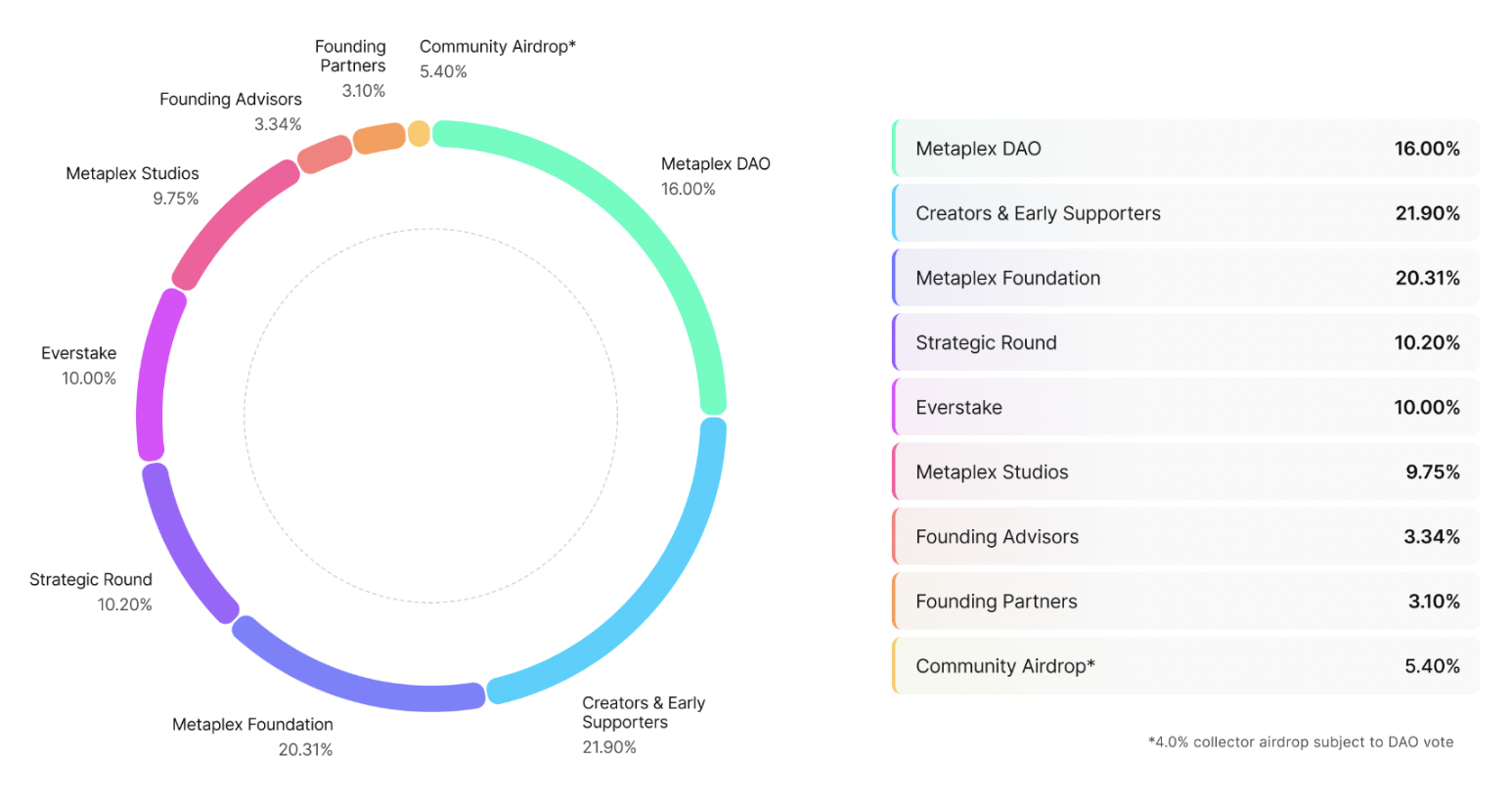
The economic model shows that 41.71% of MPLX has been released, indicating a relatively high release ratio, with the Metaplex team holding 39.41%, which is also high compared to other teams. Although 16% is controlled by the DAO, it is still important to note the unpredictable risks. According to the economic model, the fully diluted market capitalization of Metaplex is $600 million, significantly higher than the $200 million and $100 million fully diluted market capitalizations of NFT trading platforms Looksrare and X2Y2, respectively. However, since Metaplex is a protocol layer, comparing it solely with NFT trading markets may lead to discrepancies, and the current low circulation of MPLX means that the valuation is for reference only.
In terms of token utility, the white paper indicates that it will primarily be used for governance, including the protocol development roadmap, MPLX token utility roadmap, treasury fund usage, protocol upgrades and deployments, and solutions for emergencies and other unpredictable situations. Additionally, there may be NFTs and other digital assets that can only be accessed by holding MPLX.
Metaplex has established NFT protocol standards for the Solana ecosystem, providing composability space for various NFT projects within the Solana ecosystem, which has benefited the NFT ecosystem on Solana. The issuance of the token signifies that Metaplex has entered a new phase, and PANews will continue to monitor the design of the subsequent economic model and token value capture.










